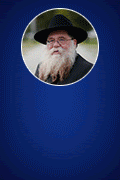West Palm Beach, FL - South Florida clergy are turning to technology to broaden their audiences, putting cyber-sermons and virtual religious lessons alongside the blooper reels and video blogs on YouTube.
Clergy Put their Faith in YouTube
West Palm Beach, FL – South Florida clergy are turning to technology to broaden their audiences, putting cyber-sermons and virtual religious lessons alongside the blooper reels and video blogs on YouTube.
Religious leaders say the national exposure likely won’t generate donations or get new congregants to walk through their doors. But they say the positive phone calls they get about their amateur videos provides an adrenaline rush that will keep them filming and filing to online.
Rabbi Mendy Kornfeld, of Chabad of West Palm Beach, posted a recent video, “Kabbalah in West Palm Beach,” to attract people to a series of lectures. He holds his 7-month-old son, Mayer, as he describes his seven-week course and offers a link to his Web site, myjli.com.
“There is a group that may not want to read an e-mail,” Kornfeld said. “I was trying to figure out what would be the most viewed if I sent it out. More than 200 people watched the video; that’s more than access my Web site.”
YouTube is a Web site for posting and sharing videos and commenting on them. Participation is easy; there’s no need to download software or register in order to watch a film. About 27.6 million people visited the site in September, according to a November report in Maclean’s magazine.
YouTube won’t release the total number of videos on the site, but says people add about 65,000 new ones every day. A recent search showed about 47,800 YouTube videos had the key word “Christian,” while 13,700 had “Muslim” and 6,700 “Jewish.” That compares with 14,800 for “President Bush” and 34,700 for the keyword “Iraq.”
“YouTube is changing the face of evangelism in the modern world,” said Kevin Rogers Cobus, editor of Technologies for Worship Magazine.
He plans a seminar on churches’ use of YouTube at the National Association of Broadcasters convention in April in Las Vegas.
“It’s accessible and cost-effective. Technology is second nature to young people; they’ve never known life without the Internet. They bring those things with them to church.”
Lee Rainie, director of the Pew Internet & American Life Project, said religious institutions have embraced technology and continue to remain on top of new electronic trends.
“Web video is here to stay,” he said. “With each wave, chat rooms, listserves, homilies and now YouTube, churches have been on the cutting edge.”
YouTube is not the only way for religious groups to use the Internet to spread the word about their work: they can podcast, send e-mail blasts, or develop a site on Myspace.com or Facebook.com. Creating Web site and e-mail blasts have become basic tools of religious communication: About 64 percent of America’s Web users have sought religious information on the Internet, Pew research shows.
But some pastors and rabbis say they have found the comments about their YouTube videos so affirming that they are already filming additional sermons, plays and advertisements for their ministries.
“This is very early in what we see as a huge opportunity,” said the Rev. Glen Caneel, of First Grace Church of Plantation, who has posted 12 videos of his sermons in the past few weeks.
Randy Scharf, of Plantation, watched his pastor’s videos on YouTube after seeing the links on the church’s Web site, learngrace.com.
“YouTube is a tease to direct people to the full message on the Web site,” said Scharf, 52, a general contractor. “You do whatever you can to get the gospel out. The price is definitely right.”
But viewers of YouTube videos may not be the audience the religious groups seek to target, said Vince Imani, a vice president of California-based PraiseCast, which designs and markets videos for churches and non-profit groups.
“YouTube is not designed to deliver particular results,” Imani said. “It’s for people who have an urge to communicate, but not every communication is effective. Why would they promote their faith on a site that has immodest advertising? They forget that aspect when it’s free.”
Some local groups say their YouTube post generated little response. A Jewish Federation of Palm Beach County video designed to gather young professionals for an upcoming trip to Israel garnered little attention, federation spokesman Bill Orlove said.
“It was an experiment to see what kind of response we would get from the under-40 crowd we’re trying to reach,” Orlove said. “But we might do it again, depending what we were trying to promote.”
But Rabbi Josh Broide, of Boca Raton Synagogue, said he has become a YouTube devotee. He has posted a video to promote Torah Academy of Boca Raton, a blooper video from a synagogue dinner and video skit that taught viewers about Hanukkah. That film got 8,380 hits.
Simi Sherman, 25, a Boca Raton Synagogue member, said he viewed the video and forwarded the link to several friends.
“I thought it was funny, educational and creative,” said Sherman, a teacher. “I sent it to friends who otherwise have little exposure to Judaism. They view it as a modern way to learn, instead of going to a lecture.”
Broide said he sees the films as a cutting-edge way of teaching Jewish law to the unaffiliated and promoting the synagogue as a creative, happening place.
“It’s not going to get people to move here,” he said. “But other communities have contacted us because they want to start similar programs. How else can we get 8,000 people to see a video in one week?”
















Big Fans in NY
Way to go Mendy!!
always in the news… ;-)